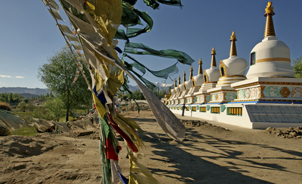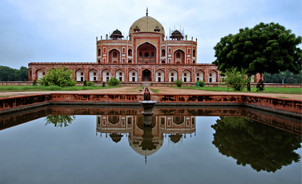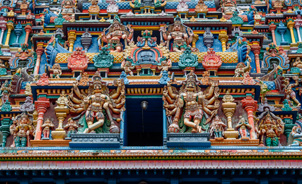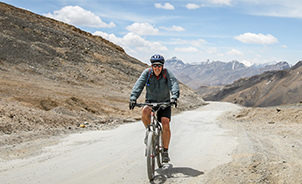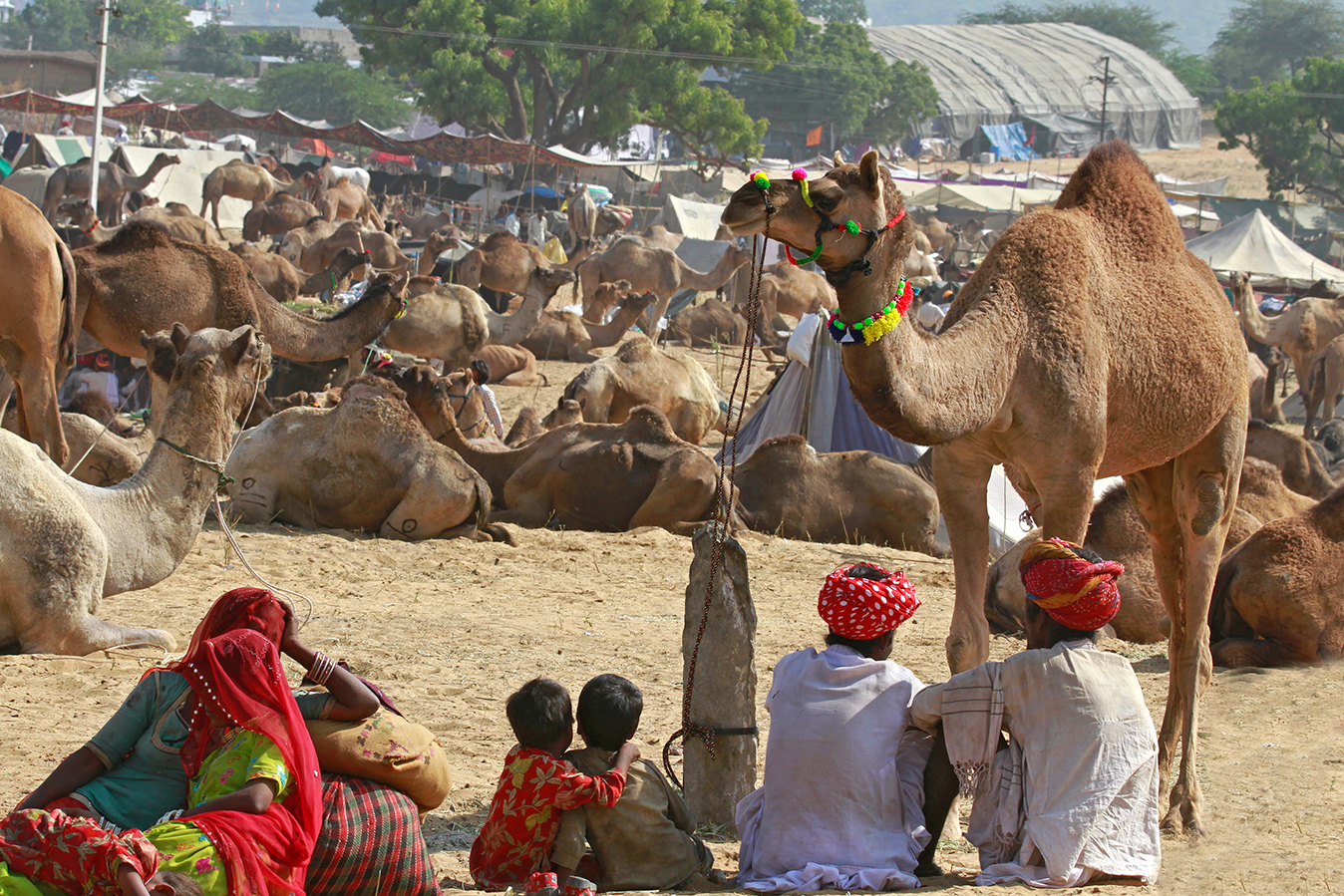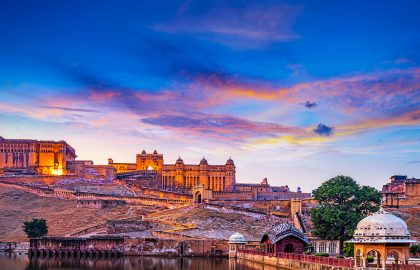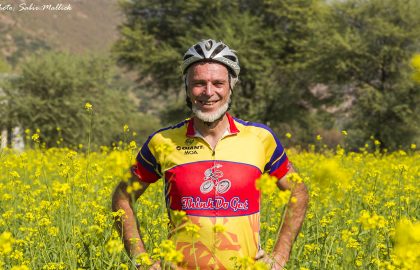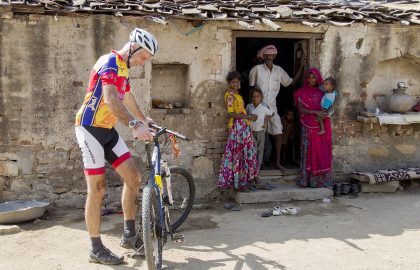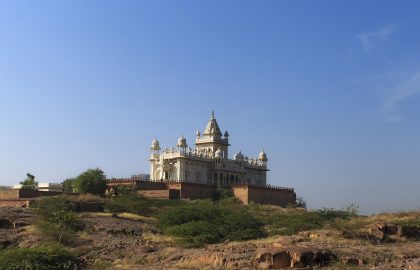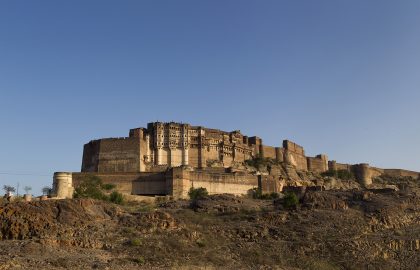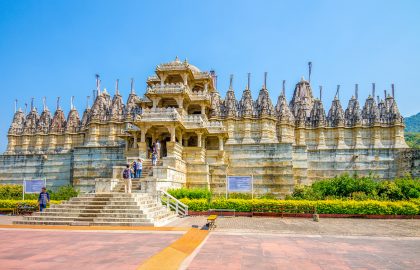NO “RAJASTHAN CYCLING HOLIDAY TOUR” IS COMPLETE WITHOUT A VISIT TO THE VILLAGES OF SHEPHERDS, CAMEL HERDERS, AND SNAKE CHARMERS.
For ages, India has been proverbially known to the west as the land of snake charmers. In this modern day and age, that mythological image has blown over and consigned to the archives of history, but any foreign tourist on an Indian holiday trip can still see the vestiges of that image in the sand bowls of rural Rajasthan, in the sun-scorched villages where time seems to tick slow and where the life-hardened people still eke out a living herding camel, catching snakes, singing age-old folk songs, and dancing the Kabelia dance.
These rustic people, mind you, put store by their traditional ways and have a great sense of honour. Anyone on Rajasthan cycling tour is well advised to leave prejudices and preconceived notions by the wayside and spend some quality time with these village people to truly know their culture and understand their outlook towards life.
I AND A GROUP OF OTHERS ON THIS INDIAN CYCLING HOLIDAY TOUR GOT TO DO JUST THAT AND WE CAME AWAY THE BETTER FOR IT.
The culture shock, I have to admit, may not have been so strong and amplified had we not spent the first few days ticking the tourist hotspots of Rajasthan off the travel checklist. The royal pomp and placid serenity of Udaipur, the military grandeur and elevated hauteur of Kumbhalgarh Fort, the exquisite carvings and marble stonemasonry of Ranakpur Jain Temple – all of this had already cast a spell on us before we began pushing our way into the scrubland country.
Leaving Ranakpur behind on Day 7 of the Rajasthan adventure biking trip, our group of multinational cyclists set out for what was to be the longest day in the saddle yet. Our destination for the day was Korta, 75 km away, and accessible by a route that was partly metaled, partly dust and gravel. The road cut through the jungle and scrubland in the foothills of the Aravalli mountain range – a perfect setting for any cycling buff looking to explore Rajasthan countryside.
Though a long day’s cycling lay ahead of us, we all took our time pedaling past this quiet landscape and the quaint hamlets that turned up along the cycling route. These villages were abuzz with colour and clutter of rustic chores. The colour red especially finds favour with rural Rajasthani women; almost all of them wear red saris. Likewise, vibrant hues of the red, yellow, green and blue can be seen in the men’s turbans. For the rural people of Rajasthan, colour is the antidote to the barrenness of the surrounding landscape. It is the respite from the drudgery and hardships of life.
The village of Korta – when we arrived there in the evening – turned out to be bigger than we had expected. Over the years, it has become a major draw among foreign tourists looking for an unvarnished Rajasthan rural experience. The people of Korta belong to the Rabari sect. According to legend, the men of this village married the daughters of gods rather than mortal women in ancient times and thereby earned the epithet of Rabari, meaning those who go out of the conventional way. Rabari men today are mostly camel herders and shepherds and they travel to places far and wide in search of greener pastures. The women and the elderly run the village. The women dress up distinctly in black headscarves and heavy brass earrings. Almost all of them know folk songs by heart.
We met up with the villagers of Korta and even visited a 10th century temple before retiring to our resort, Hotel Korta Escape, and were treated to scrumptious food and drinks and hospitality that would please anyone on Rajasthan biking holiday.
The next day took us still deeper into the heartland of rural Rajasthan as we left Korta for another far-off village named Bhenswara. We took a cycling route through a pastoral landscape dotted here and there with adobe houses and stray herds of sheep. Some of the women in our Rajasthan Short cycling trip tried their hand on shepherding, but with little success. The men followed suit, but did even worse. Guess it’s best for cyclists to stick to their pedal and saddle, but we can’t help stepping beyond the pale for any first-hand experience of rural Rajasthan.
As it turned out, we were in luck. We arrived in Bhenswara to find a group of cobra gypsies called Kalbelia camped in. The Kalbelia people are nomads who make a living catching cobra snakes and selling venom. The tribe’s women sing songs for alms and even perform a special Kalbelia dance.
On request and offer of some money, a Kalbelia dance performance was arranged for us. None of us knew what to expect. There was no stage, no mikes, no lights. Just a couple of rustic men with homemade musical instruments and two dance girls dressed in all-black costume embellished with silvery lacework and red frills.
The music began and the girls started to dance. It was the snake charmer’s music and the girls imitated the movements of cobra snakes in their dances. They whirled, they cupped their hands to mimic the cobra hood, they shimmied their bodies in the fashion of a slithering snake. But what truly blew us away was an acrobatic stunt one of the girls pulled off in the end.
PLACING TWO FINGER RINGS ON THE MUDDY FLOOR, THE DANCER BENT BACKWARDS ALL THE WAY DOWN AND PICKED UP THE RINGS WITH HER EYELIDS.
That was the show-stopping act, the perfect climax of a sterling dance performance. It was as good a look into the culture of Rajasthan we could ask for. These unexpected little discoveries are the dividends that make an Indian holiday trip richer.
To cycle through a rural countryside, to spend time with the people, and to be treated to a special song and dance performance – could one ask for more from a Rajasthan vacation.

